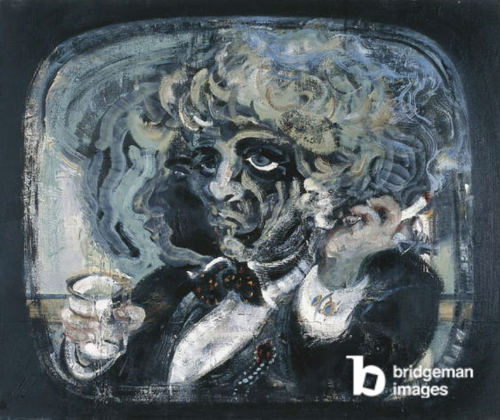Published 11/03/2022
As part of our 50th anniversary celebrations and for International Women's Month, Bridgeman Images is pleased to share a brand new interview with our founder, Lady Harriet Bridgeman.
1. What inspired you to start Bridgeman Images in 1972? Did you have a vision of what it would become?
I started Bridgeman Images in 1972 because over my experience as editor of art books and illustrated art magazines, I found the biggest headache was obtaining high quality images. Museums and other institutions did not have photographic departments and found it very difficult to meet our tight weekly deadlines and send us good quality images which were suitable for reproduction. I never imagined it would grow in the way it has, but I think this exemplifies the fact there was a need for it at the time.

2. Bridgeman Images pioneered the digitisation of museum collections. What were the first collections to join the archive?
The Corporation of London, which owned the Guildhall Art Gallery and Library and a number of other City of London collections was one of the first to join the archive and produced a rather wonderful contract which looked rather like Dick Wittington's, written on parchment and with a red ribbon. I also remember that the Royal Albert Memorial Museum, Exeter had to adapt their contract with the recreation departments and cemeteries to be suitable for use with a picture library!

3. What separates out Bridgeman Images' expertise from perhaps more mainstream or universal content licensing companies?
Apart from the fact that Bridgeman Images was among one of the first picture libraries to be founded, it is regarded as the Rolls Royce of picture libraries, in the sector of art, culture and history. It is also exceptional for its philanthropy in that it has been a major benefactor to museums, galleries, institutions and private collectors through returning a percentage of all reproduction fees to the owners of the works.

4. What does it take to be a successful businesswoman in the arts and has that changed since 1972?
I think success depends on hard work as much as anything else but also seeing a gap in the market. It does help to be an entrepreneur and if you can say with your hand on your heart your work is your play, that is a considerable help!

5. It is International Women's Month; in light of this, who are your favourite female artists from the Bridgeman archive?
Maggi Hambling CBE, Eileen Agar, Frida Kahlo, Mary Fedden, Leonora Carrington, Dame Paula Rego and Georgia O'Keeffe.

All rights reserved 2022 / Bridgeman Images
6. In 2006, you also founded the not-for-profit Artists' Collecting Society (ACS), can you tell me how that happened?
In 2006 when the UK government introduced the Artist's Resale Right in line with the rest of Europe, I was approached by a group of Art Market Professionals, who felt I would be an appropriate person to run it given my extensive experience in the art world. There was a need for a transparent, fair and professional collecting society that puts artists’ needs first thus I founded ACS.

7. Finally, If you could invite 6 people from history to dinner, who would they be and why?
Augustus John
I think he was an exceptional draughtsman and he flouted the social conventions of the time. It would have been enormous fun to be a part of his circle and I love fun!
Florence Nightingale
She was a woman pioneer, who made a great difference both in medical terms and to the acceptance of women as equals to politicians.
Mother Theresa
As has often been said, she was as near a saint as you can get and at this time with the war in Ukraine, we value those exceptional and unselfish people even more.
Oscar Wilde
I would like to apologise for the infamous way he was treated and also I am sure I would enormously enjoy his company just as I enjoy his quotations now.
W. B. Yeats
I was brought up to love Irish literature and this was further enhanced at Trinity College Dublin. He was also a friend of my grandfather so I would like to learn more about my grandfather and those times in Ireland from him.
Frida Kahlo
Not only was she a great and interesting artist but I also have the memory of visiting her house which had been converted to her museum in Mexico City. I took advantage of her bathroom without realising it was an historical relic rather than for practical use!



